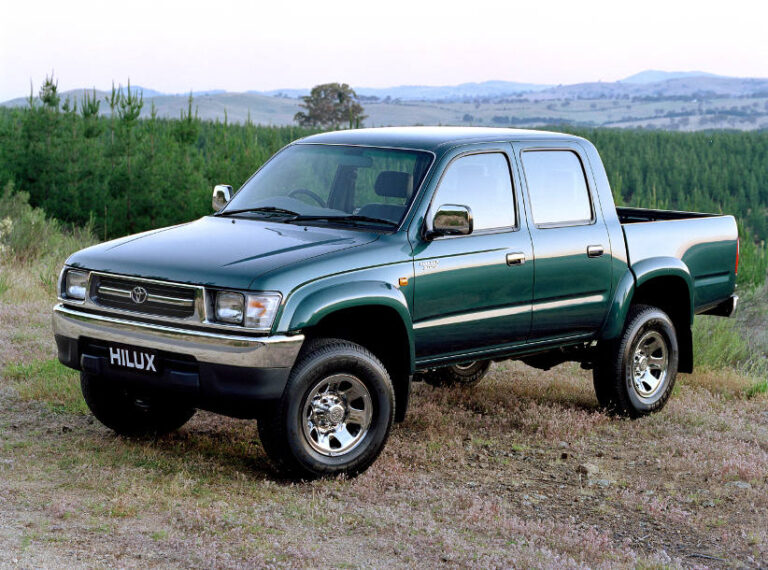– By Paul Oliver –
In recent months I’ve had cause to review both the safety ratings and maintenance costs in fleets that still own older utilities. The oldest example was a 1989 Toyota Landcruiser Cab Chassis – while still performing its job in the fleet admirably, it raised compliance concerns for me as it had no ANCAP safety rating.
It wasn’t until 2007 that these fleet vehicles ‘got on the board’ with a 3-star ANCAP safety rating, while 5-star ANCAP ratings came along eventually in 2016. This is not a reflection on Toyota, it simply demonstrates the incredible strides that have been made in fleet vehicle safety in recent years.
As part of the next fleet consulting assignment I undertook for a local government organisation, when first provided with the fleet data I noted they had a mixture of ute brands with a number built 2014/2015. I knew straight away that this was around the time that a few models made the significant leap from 4 to 5-star ANCAP safety ratings, finally catching up to their passenger vehicle cousins.
Fleet Safety Policy
Most organisations are now either aware of the importance of buying 5-star ANCAP safety rated vehicles for their fleet, or are doing it by default as competition amongst the manufacturers has ensured the top sellers are now highly rated.
However, there are circumstances where the current fleet is sometimes not being assessed and replacement decisions influenced by ‘raising the bar’ on safety. This certainly proved true in the most recent example, where younger vehicles with better safety ratings had already been replaced, yet the older vehicles were retained.
Effective Life Considerations
Light commercial vehicles are often the workhorse of Australian fleets. It’s not unusual for organisations to retain them for longer periods than passenger fleet vehicles. This can be the result of a desire to amortise fitout costs, lower overall kilometres travelled due to lack of personal use, or the simple fact they can handle it and don’t have to be the latest model to get the job done.
These days, a 5-year lease term on light commercial vehicles are common and many organisations are stretching them out for longer!
In these circumstances, it is important to consider if the vehicle is still ‘fit for purpose’ and by definition that should include both safety and cost considerations.
At a Crossroad
Let’s review when some of the major ute brands ‘crossed over’ from a 4 to 5-star ANCAP safety rating:
- Toyota Hilux – August 2013 (all 4×4 single & extra cab variants)
- Isuzu D-Max – November 2013 (4×4 crew cab)
- Ford Ranger – March 2014 (all variants)
- Nissan Navara – March 2015 (all dual cab variants)
- Mitsubishi Triton – April 2016 (all variants)
So, when we consider that many of these vehicles form part of our current fleets, and are often retained for between 5+ years, it seems we have come to a crossroad where there is an opportunity to improve our overall fleet safety.
Maintenance Considerations
Depending on the work environment, some of these vehicles can lead a pretty hard life. A recent review of maintenance costs identified some escalation in costs around the 6-7 year mark, although it’s likely that was more related to a combination of age, kilometres and usage. The replacement of a turbo in the diesel engines can be expensive and suspensions can suffer fatally from regular heavy loads and perhaps occasional ‘overloading’.
Planning Ahead
Some would argue that based on current supply chain issues, these vehicles will take ages to be replace. Agreed, it may take 6-12 moths to get a replacement, but I’d suggest it’s worth the effort to undertake the planning now.
Based on current odometer readings and considering average annual usage what is the forecast odometer reading in 12 months? There will come a point when the age and kilometres will contribute to some additional maintenance costs.
Used Car Market
At the same time, the used car market is at an all-time high, creating an opportunity to maximise the resale value of the old ute while raising the bar on safety with the purchase of a new one.
All the ingredients seem right for good fleet management practice – upgrade vehicle safety, minimise maintenance costs and maximise resale value.
Paul Oliver is the Director & Principal Consultant of Fleet Advisory. He provides independent expert advice and consulting services relating to fleet management – see Fleet Advisory for more information.







